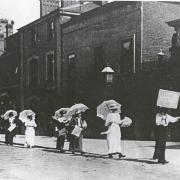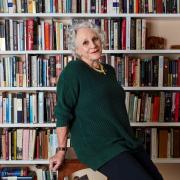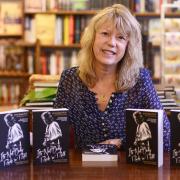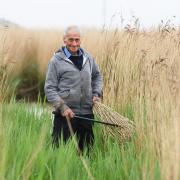Norwich-born Amelia Opie’s novel, The Father and Daughter, first appeared in print 220 years ago. It was hugely popular at the time and was one of the most widely-read novels of the early 19th century, yet, like its author, it has now been largely forgotten. As we celebrate International Women’s Day Margaret Brecknell explains why Amelia needs to be remembered.
Norwich-born Amelia Opie’s novel, The Father and Daughter, first appeared in print 220 years ago. It was hugely popular at the time and was one of the most widely-read novels of the early 19th century, yet, like its author, it has now been largely forgotten.
Amelia was born on November 12, 1769, the only child of James and Amelia Alderson. She was already a popular figure on Norwich’s social scene before, in the early 1790s, the gregarious Amelia began to make regular trips to London.
Her father was an active member of Norwich’s Unitarian Church, a movement which was known to campaign on social injustice, so perhaps inevitably she became acquainted with some of the late 18th century’s most radical thinkers during her time in the capital.

She also socialised with many of the leading artistic figures of the day and at one party she met the recently-divorced artist, John Opie. It seems that initially he was more smitten with her than vice versa.
She wrote to a friend that “Often do I rationally and soberly state to Opie... the reasons why I could never be happy with him, nor him with me. But it always ends in his persisting in his suit.” His persistence eventually paid off, as in May 1798 the pair were married.
Three years later The Father and Daughter was published. Writing was still generally regarded as an unsuitable profession for a woman at the time and it was commonplace for female authors to publish their work anonymously, as Amelia had done with her first novel, Dangers of Coquetry, several years previously. However, with the full support of her husband, The Father and Daughter was published under her own name.
She later acknowledged the debt she owed to her husband, commenting that, “When our marriage took place, Mr Opie knew that my most favourite amusement was writing, and always encouraged, instead of checking, my ambition to become an acknowledged author.”
The Father and Daughter’s moralistic tale of how a father is driven mad by an unscrupulous lothario’s seduction of his daughter may appear overly melodramatic to modern eyes, but it certainly hit the mark with readers at the time of its publication. The great 19th century novelist, Sir Walter Scott, is reported to have told Amelia that he wept on reading her book. She herself once wrote that “I like to make people cry; indeed, if I do not do it, all my readers are disappointed.”

Her next novel, Adeline Mowbray, proved to be equally successful. Its main character was loosely based on the unconventional life of early feminist, Mary Wollstonecraft, whom Amelia had befriended in London during the 1790s.
According to Amelia’s biographer, Cecilia Lucy Brightwell, the work was intended “to portray the lamentable consequences which would result from the adoption of lax principles on the subject of matrimony.” The title character is, indeed, seen to rue her decision to live openly with her unmarried lover, but Amelia’s sympathetic treatment of her heroine’s later disastrous marriage suggests that she may have had more in common with the early feminist movement than her contemporaries realised.

Following the death of John Opie in 1807, Amelia returned to live in Norwich where she remained for the rest of her life. She continued to write, with the publication of several more novels, some well-received poetry collections and a biography of her late husband.

Amelia had enjoyed a close relationship with Norwich’s most prominent Quaker family, the Gurneys, since childhood and she eventually became a member of the Society of Friends in 1825. After this she never published another novel, believing it to be in contradiction of her religious views, but she did continue to write poetry including an anti-slavery poem for children called The Black Man’s Lament.
Amelia had long been interested in the campaign to abolish slavery. She had even touched upon the then highly controversial subject in Adeline Mowbray. As a result of her increasing involvement with the Society of Friends, she became a particularly vociferous supporter of the cause which was championed by the Quaker movement.

Hers was the first name on a list of 187,000 signatories when a petition from women to abolish slavery was presented to Parliament.
Amelia Opie died in Norwich, aged 84, on December 2, 1853. By this time her work already appears to be regarded as outdated. One obituary writer concedes that Amelia’s novels were once “cherished and wept over, as moving and truthful,” but were now considered “to be poor as regards invention, slight in manner and unreal in sentiment” in comparison with the work of later novelists like Charlotte Bronte and Elizabeth Gaskell.

Yet the causes for which Amelia Opie campaigned so passionately, such as the abolition of slavery and women’s rights, remain as relevant today as they ever did. For that alone the legacy of this accomplished Norfolk woman deserves to be recognised.




























